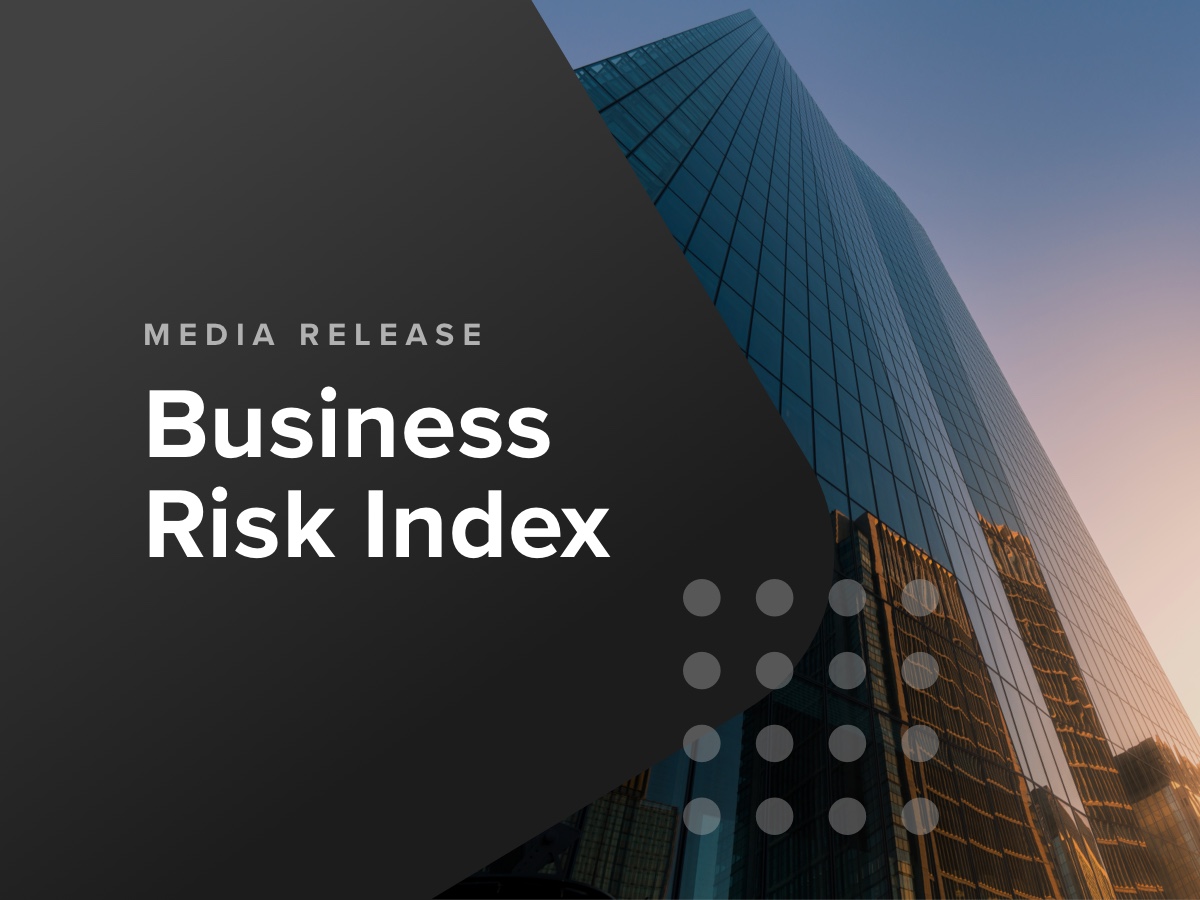CreditorWatch’s June Business Risk Index data flags stabilisation in business conditions
KEY INSIGHTS:
Insolvencies remain high but stable: CreditorWatch data indicates that business insolvencies have plateaued at historically elevated levels, with the particularly affecting Construction and Hospitality sectors remaining particularly affected.
Payment defaults drop to 12-month low: Registered B2B trade payment defaults fell 6.5% in June to their lowest level since July 2024, suggesting easing cash flow pressures across many businesses.
New sector stress emerging: While traditional high-risk industries are seeing tentative stabilisation, insolvency rates are rising in typically stable sectors such as Healthcare and Education, while Retail and Transport, Postal and Warehousing insolvencies are also rising, highlighting broad economic strain.
FY25 insolvency snapshot: A total of 14,716 businesses became insolvent in FY25 – a 33% year-on-year increase. Hospitality, Construction, and Other Services accounted for over half of all insolvencies.
Outlook remains uncertain: While interest rates have begun to ease and further cuts are expected, global economic headwinds (e.g. U.S. tariffs, demographic shifts, climate change) and persistent cost pressures continue to create a challenging business environment for FY26.
SYDNEY, Wednesday 23 July 2025 – The June Business Risk Index from leading credit reporting agency CreditorWatch reveals further indications of an improvement in conditions for Australian businesses.
CreditorWatch’s key proprietary Trade Payment Defaults series – which measures registered invoice defaults between two business counterparties – fell 6.5% in June 2025. This was the lowest level of reported invoice defaults since July 2024, and defaults were around 25% lower than the high recorded in December 2024.

Data sources: CreditorWatch, Macrobond
There was also a further levelling out of insolvencies in June. The trend provides support for the contention CreditorWatch has been advancing for some months, that insolvencies have been plateauing, albeit at elevated levels. If the volume of registered trade payment defaults were to continue to decline, this would suggest that some improvement in insolvency numbers might be forthcoming.
June insolvency data from ASIC remained elevated but has broadly moved sideways around 10% below the November 2024 high in recent months. CreditorWatch attributes the broad plateauing in recent months to a combination of income tax cuts in mid-2024, cost-of-living support from governments, a stabilisation in the rate of new companies with tax defaults and more moderate rates of cost growth in recent months.
The positive impact of the first RBA interest rate cut may now be starting to be felt, though it’s too early for the May rate reduction to be impacting significantly, while a further widely expected rate cut in July did not occur, but is expected in August.
Companies entering insolvency for the first time
Seasonally adjusted, as at 30 June 2025

Data sources: CreditorWatch, ASIC, Macrobond
CreditorWatch CEO Patrick Coghlan says the June Business Risk Index data reinforces the view that while insolvencies may have peaked, the environment remains highly uncertain for many Australian businesses.
“The decline in trade payment defaults is a promising signal that business cash flow pressures may be easing, but with insolvencies still running 33% above FY24 levels, and particularly elevated in Hospitality and Construction, I’m not getting too excited just yet.
“The sharp rise in closures across sectors traditionally seen as more stable – like Healthcare and education – underlines the breadth of the economic strain.
“We’ll continue to monitor for early signs of sustained recovery, but the next six months will be critical for determining whether insolvency rates begin to fall or remain stubbornly high.”
INSOLVENCY TRENDS BY SECTOR
The plateauing in overall insolvencies hides several differing trends across sectors. The two sectors that have consistently reported the highest levels of insolvencies in the past 12 to 18 months – Construction and Hospitality – are seeing insolvencies tentatively stabilise in the case of Construction, while Hospitality insolvencies are below the previous highs, but are likely still trending higher.
Companies entering insolvency for the first time – Construction and Hospitality
Seasonally adjusted, as at 30 June 2025

Data sources: CreditorWatch, ASIC, Macrobond
At the same time, insolvencies continue to exhibit a deteriorating trend in Health Care & Social Assistance, Administrative & Support Services, Rental, Hiring & Real Estate Services, Retail Trade, and Transport, Postal & Warehousing.
The numbers in each sector each month are not as large as for either Construction or Hospitality, but combined account for over a fifth of insolvencies each month at the present time. The ongoing pressures being felt in these sectors, contribute to the expectation that insolvencies will more likely level off in the next six months rather than improve.
The rise in insolvencies in Education & Training and Healthcare & Social Assistance is somewhat unusual, as both sectors have a significant government underpinning to their revenues. Changes to immigration and foreign student policies are likely impacting the Education & Training sector.
Companies entering insolvency for the first time – Selected sectors
Seasonally adjusted, three-month average

Data sources: CreditorWatch, ASIC, Macrobond
FY25 IN REVIEW
The table below provides detail on first-time insolvencies recorded in the 2024-25 financial year just ended. There are a number of important points to note:
- Three sectors alone accounted for over half of the insolvencies by number – Accommodation and Food Services (Hospitality), Construction and Other Services. This was approximately double their relative shares of as a proportion of operating businesses.
- 14,716 businesses became insolvent in FY25, a rise of 33% over the previous financial year’s total. This constituted 0.6% of the count of businesses operating at the end of FY24.
- Accommodation and Food Services businesses recorded the highest share of businesses becoming insolvent at 2.2% (just over one in 50) of the businesses that were operating as at June 30, 2024.
- While Construction had the highest number of insolvencies overall at 3,595 for the financial year (nearly one in four insolvencies), Construction has a very high number of operating businesses, so that total is less than one percent of the construction businesses that were operating at 30 June 2024.
- The second and third highest sector shares of insolvency – Electricity, Gas, Water and Waste Services and Mining – both have relatively small numbers of operating businesses (less than 10,000 each at the end of the previous financial year).
- Agriculture, Farming and Fishing had the lowest insolvency rate as a share of operating businesses at just 0.1% (less than one in a thousand of the businesses operating at the end of the previous financial year). In part, this likely reflects a sequence of previous strong seasons.

Data sources: CreditorWatch, ASIC, ABS
Normally when insolvencies increase, the unemployment rate does as well. In this cycle, that relationship has been less in evidence. This likely reflects the fact that a significant proportion of insolvencies have involved small businesses, in part due to the increasing use of Small Business Restructuring (SBR) arrangements. In 2024-25, some 2,918 restructuring arrangements were entered into, nearly 20% of total insolvencies for the financial year.
Small Business Restructuring Appointments (SBRs)
by financial year

Data sources: CreditorWatch, ASIC, Macrobond
All industries saw an increase in the business closure rate from FY24 to FY25. The highest average business closure rates across the year were in Food and Beverage Services (8.92%), Administrative and Support Services (6.09%) and Arts and Recreation Services (6.08%).
Business Closure Rate by Industry
Average FY25 vs FY24

Data sources: CreditorWatch, ASIC intraday feed
On a state and territory basis, all regions saw an increase in the average business closure rate from FY24 to FY25. The ACT had the highest business closure rate across FY25 with one in 18 businesses (5.55%) closing its doors.
Business Closure Rate by State/Territory
Average FY25 vs FY24

Data sources: CreditorWatch, ASIC intraday feed
Food and Beverage Services had the highest closure rate in every state and territory. Agriculture, Forestry and Fishing had the lowest closure rate in all regions except the Northern Territory, which registered Professional, Scientific and Technical as the lowest ranked sector.
Highest and Lowest Business Closure Rates by State/Territory
Average FY25

Data sources: CreditorWatch, ASIC intraday feed
CREDITORWATCH’S FY26 OUTLOOK
Several significant challenges remain for businesses as the new financial year begins. Previous significant cost increases have not reversed, even if the rate of inflation and cost increases going forward have slowed.
Helpfully, interest rates have begun to come down and further reductions are in prospect, including in August, which will help both consumers and businesses. Significant uncertainty remains about the ultimate effects on economic growth globally and in Australia from President Trump’s tariff and trade policies.
While Australia is not directly impacted as much as many other countries, given the US is a small export market for us, large indirect linkages are present via the large Asian economies which are our largest export markets.
In addition, the US economy is likely to experience slower growth as a result of higher tariff settings, which is never helpful for global growth, given the US economy is such a large part of the world. Working in the other direction are expected to be ultimately lower interest rates around the world and some freeing up of world trade.
Other longer-term forces including AI and technology, the ageing of populations, rising inequality, climate change and geopolitics contribute to a challenging outlook for firms, though each trend also provides opportunity for business growth.
Subscribe for free here to receive the monthly Business Risk Index results in your inbox on the morning of release. No spam.

Get started with CreditorWatch today
Take your credit management to the next level with a 14-day free trial.
